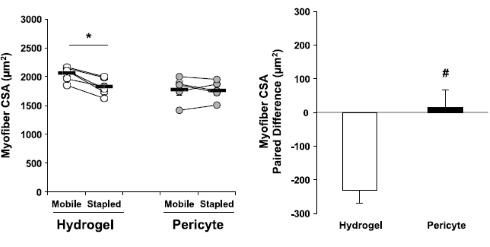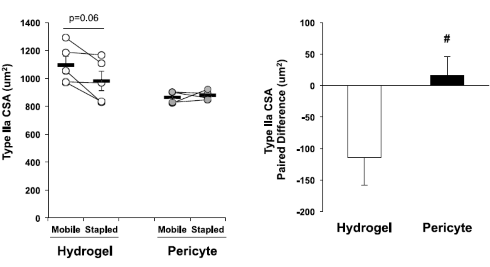TweetPericytes | Blood vessel wall cells that make muscles grow
American scientists are experimenting with a new medical technology that may accelerate muscle growth. In their experiments, the researchers do not administer hormones, growth factors or amino acids to laboratory animals. They inject them with cells instead. No, not muscle cells - but cells involved in the construction of new small blood vessels in muscle tissues. The researchers hope they have found a way to help older people who have been in bed for a long time.
Pericytes
Pericytes are cells that surround the endothelial cells of the blood vessel walls. Among other things, pericytes ensure that those blood vessels can function properly. They also play a key role in the formation of new blood vessels.
Study
The researchers, who are affiliated with the University of Illinois at Urbana-Champaign, made it impossible for 2 weeks for male C57BL/6-mice to use one of their hind legs. As a result, the muscle mass in the inactive leg decayed. For two weeks thereafter, the mice regained control of their legs, which induced the recovery of muscle mass.Some of the mice received injections of pericytes in the switched off leg just after the first two-week period had ended. This was the experimental group. Mice in the placebo were given injections without pericytes.
Results
The mice in the control group still had smaller muscle fibres in the hind leg that had been inactivated when the two-week recovery period was over. In the mice that had received pericytes, muscle fibre size was fully recovered - it had even increased slightly.

Treatment with pericytes mainly had a positive effect on the type-2a muscle fibers. Those are the strong muscles that you train with high reps strength training. They have more mitochondria and more capillaries than the super-fast type-2b muscle fibers, but are less strong and smaller. Type-2b muscle fibers are important for weightlifters, bodybuilders and sprinters, while type 2a muscle fibers are relevant for runners at the 400 and 800 meters.Conclusion
"Our findings suggest that pericyte-based therapies may provide an effective approach toward rebuilding skeletal muscle mass and function after loss", says sports scientist and research leader Marni Boppart of the University of Illinois in a press release. [sciencedaily.com April 25, 2019]
"We hope that this study provides the first step toward preventing devastating disabilities that can occur in older adults following long periods of inactivity."
We, the compilers of this free web magazine, suspect that if Boppart's hope becomes a reality, there will be more applications for this therapy ..
Source:
FASEB J. 2019 Apr 25:fj201802580R. doi: 10.1096/fj.201802580R. [Epub ahead of print].
More:





 Attention Guest, if you are not a member of Fitness Geared - Body Building & Fitness Community, you have 1 new private message waiting, to view it you must fill out
Attention Guest, if you are not a member of Fitness Geared - Body Building & Fitness Community, you have 1 new private message waiting, to view it you must fill out 





























 Thanks:
Thanks:  Likes:
Likes:  Dislikes:
Dislikes: 








 Reply With Quote
Reply With Quote

